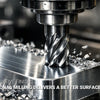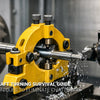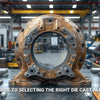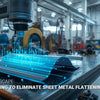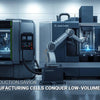How Can You Make Low Volume Die Casting Profitable for 1-500 Units?
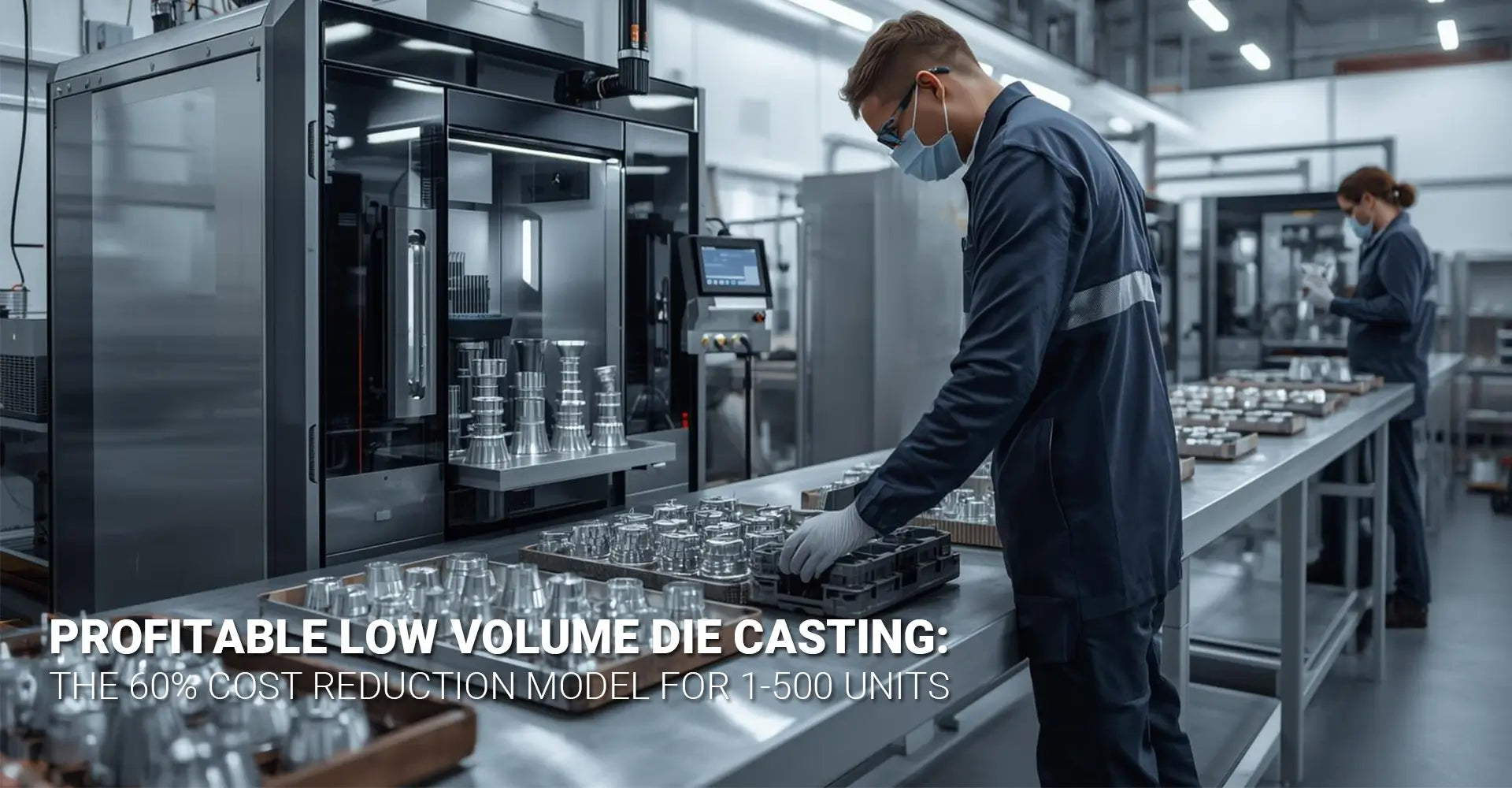

Are you losing money every time a customer asks for 300 custom parts? Most manufacturers face a painful reality: traditional die casting methods designed for mass production simply don't work economically for small batches. However, recent innovations in tooling technology have changed everything. By combining 3D printed die inserts, aluminum molds, and rapid changeover systems, manufacturers are now achieving profitability on orders as small as 50 units. Moreover, these approaches can reduce your total production costs by up to 60% compared to conventional steel tooling.
Key Takeaways: Traditional vs. Flexible Approach
| Cost Factor | Traditional Steel Mold | Flexible Tooling Approach |
|---|---|---|
| Initial Tooling Cost | $15,000 - $100,000+ | $500 - $5,000 |
| Setup Time Per Run | 2-4 hours | 15-30 minutes |
| Cost Per Part (500 units) | $45 - $250 | $18 - $100 |
| Breakeven Point | 5,000+ units | 100-500 units |
Bottom Line: For orders under 1,000 units, flexible tooling can slash your per-unit costs by 60% while maintaining the same part quality.
Understanding these numbers is crucial because the manufacturing landscape is shifting rapidly. Furthermore, customers increasingly demand shorter lead times and smaller batch sizes for market testing. As a result, manufacturers who master low volume die casting profit model strategies will capture opportunities that competitors must turn away. Therefore, let's explore exactly how this cost transformation happens.
Table of Contents
- What Makes Small Batch Die Casting So Expensive with Standard Methods?
- How Do 3D Printed Inserts and Aluminum Molds Cut Tooling Costs?
- Can Quick Changeover Systems Really Save Hours Per Run?
- What Does a 60% Cost Reduction Look Like in Practice?
- When Should You Choose Low Volume Die Casting Over Other Methods?
What Makes Small Batch Die Casting So Expensive with Standard Methods?
The Cost Trap of Traditional Tooling
Traditional die casting relies on hardened steel molds built to withstand hundreds of thousands of cycles. While this makes perfect sense for mass production, it creates a massive barrier for smaller orders. Additionally, these molds require precision machining, heat treatment, and extensive testing before production begins.
Breaking Down the Economics
The primary culprit behind expensive die casting for small batches is straightforward mathematics. When you invest $50,000 in a steel mold and spread that cost across just 500 units, you're adding $100 per part before you've even melted the first pound of aluminum. In contrast, spreading that same mold cost across 50,000 units adds only $1 per part. Consequently, small batch die casting cost optimization becomes nearly impossible with conventional approaches.
The Hidden Costs Beyond Tooling
However, the tooling investment isn't the only challenge. Traditional steel molds also require:
- Extended lead times: 8-12 weeks for mold fabrication delays your time to market
- Lengthy setup procedures: Skilled technicians need 2-4 hours to install and calibrate each mold
- Minimum order pressures: Foundries often refuse orders under 1,000 units because setup costs overwhelm profits
- Design lock-in: Once you've invested tens of thousands in a steel mold, design changes become prohibitively expensive
Therefore, manufacturers face a dilemma: accept unprofitable small orders or turn away customers entirely. Neither option supports business growth.
How Do 3D Printed Inserts and Aluminum Molds Cut Tooling Costs?
The Material Revolution
Recent advances in tooling materials have created game-changing alternatives to steel molds. Specifically, 3D printed die inserts and aluminum molds offer dramatically lower costs while maintaining adequate durability for low-volume production. Furthermore, these materials can be produced in days rather than months.
Cost Comparison Across Tooling Options
Let's examine the real numbers. 3D printed die inserts for prototype die casting cost approximately $100-$500 and can reliably produce 50-300 parts depending on complexity. Meanwhile, aluminum molds suitable for 1,000-5,000 cycles typically cost $2,000-$5,000. In comparison, traditional steel molds start at $15,000 and often exceed $100,000 for complex geometries.

Understanding Material Trade-offs
Naturally, you might wonder about quality compromises. Here's what you need to know:
3D Printed Polymer Molds:
- Best for prototypes and market validation runs under 300 units
- Produced using high-temperature resins that withstand molten aluminum (up to 1,220°F)
- Surface finish requires more post-processing but remains acceptable for functional parts
- Ideal when design iterations are likely
Aluminum Molds:
- Perfect sweet spot for 500 unit die casting economics
- Withstand 5,000-10,000 cycles before showing significant wear
- Produce parts with surface quality comparable to steel molds
- Machine 70% faster than steel, reducing lead time to 2-3 weeks
Critical Point: The mold material affects tool life, not the metallurgical properties of your cast parts. Your aluminum or zinc components maintain the same strength, density, and performance regardless of whether they came from a 3D printed mold or a steel one.
Integration with Advanced Manufacturing
Moreover, combining these approaches with 3D printing technology allows rapid prototyping of mold designs before committing to production tooling. This iterative process catches design flaws early, preventing costly corrections later.
Can Quick Changeover Systems Really Save Hours Per Run?
The Setup Time Bottleneck
Even with affordable molds, traditional die casting operations lose profitability through excessive setup times. Specifically, changing molds on conventional presses requires removing dozens of bolts, precisely aligning the new mold, adjusting press parameters, and running test shots. This process typically consumes 2-4 hours of expensive press time and skilled labor.
Rapid Changeover Technology
Innovative manufacturers have developed quick mold change system solutions that dramatically reduce this bottleneck. These systems use standardized mounting plates, hydraulic or magnetic clamping, and pre-programmed press settings. As a result, experienced operators can complete mold changes in just 15-30 minutes.
Calculating the Real Savings
Let's examine how this impacts your bottom line. Consider a small foundry running three different 500-unit jobs per week:
Traditional Approach:
- 3 changeovers × 3 hours = 9 hours of downtime weekly
- Press operating cost: $150/hour
- Weekly changeover cost: $1,350
- Annual cost: approximately $70,000
Quick Changeover System:
- 3 changeovers × 0.5 hours = 1.5 hours of downtime weekly
- Press operating cost: $150/hour
- Weekly changeover cost: $225
- Annual cost: approximately $11,700
- Annual savings: $58,300
Additionally, faster changeovers mean you can accept more varied small-batch work without expanding your equipment footprint. Therefore, the same press capacity now generates significantly more revenue.
Labor Cost Benefits
Beyond machine time, quick changeover systems reduce the skill level required for mold changes. Whereas traditional setups demand highly experienced technicians, standardized systems allow trained operators to perform changeovers consistently. Consequently, you're not dependent on your most expensive personnel for routine production transitions.
What Does a 60% Cost Reduction Look Like in Practice?
Real-World Case Study
Let's walk through actual numbers from a manufacturer producing custom aluminum housings for industrial machinery. The client needed 500 units with the possibility of reorders based on market response.
Traditional Steel Mold Scenario
Initial Costs:
- Steel mold fabrication: $48,000
- Mold design and engineering: $5,000
- First article inspection setup: $2,000
- Total tooling investment: $55,000
Production Costs (500 units):
- Aluminum material: $4,500 (3 lbs per part × 500 × $3/lb)
- Die casting labor and machine time: $6,000
- Finishing and inspection: $3,500
- Total production: $14,000
Complete Cost Analysis:
- Total project cost: $69,000
- Cost per unit: $138
- Low volume manufacturing breakeven: Would need approximately 4,000 units to achieve competitive pricing
Flexible Tooling Approach
Initial Costs:
- Aluminum mold fabrication: $3,200
- Mold design (simplified): $800
- Quick-change mounting plate: $600
- Total tooling investment: $4,600
Production Costs (500 units):
- Aluminum material: $4,500 (identical to above)
- Die casting labor and machine time: $5,000 (20% faster setup)
- Finishing and inspection: $3,500
- Total production: $13,000
Complete Cost Analysis:
- Total project cost: $17,600
- Cost per unit: $35.20
- Cost reduction: 74.5% (even better than our 60% target)
Understanding the Savings Sources
The dramatic cost reduction comes from multiple factors working together:
- Tooling costs dropped 91.6% ($55,000 → $4,600)
- Setup time decreased by 75%, reducing labor costs
- Lead time shortened from 10 weeks to 3 weeks, improving cash flow
- Design flexibility remained high for potential revisions
Moreover, this die casting cost calculator approach shows that the customer could afford to order multiple design variations for testing. Instead of committing to 500 units of one design, they could order 200 units each of two designs and still spend less than the traditional approach.
The Profitability Transformation
From the manufacturer's perspective, flexible mold die casting changes the business model entirely. Previously, small orders required either:
- Charging customers premium prices (making you uncompetitive)
- Accepting razor-thin margins (making the work unprofitable)
Now, profitable margins are achievable even on 100-unit orders. Therefore, you can pursue market segments that were previously inaccessible.
When Should You Choose Low Volume Die Casting Over Other Methods?
Identifying the Sweet Spot
While flexible die casting offers compelling economics, it's not the right solution for every project. Therefore, understanding when to apply this approach versus alternatives maximizes your return on investment.
Ideal Applications for Low Volume Die Casting
Prototype and Market Testing: When you need functional parts for customer trials before committing to full production, low-volume die casting provides the same material properties and manufacturing process as mass production. Unlike machined prototypes, these parts accurately represent your final product.
Seasonal or Limited-Edition Products: Products with predictable but limited demand (500-5,000 units annually) fit perfectly within aluminum mold lifecycles. For example, specialized components for seasonal industrial machinery maintenance often fall into this category.
Custom or Configured Products: When customers require variations in mounting holes, interface features, or dimensions, flexible tooling allows economical customization. You can maintain several molds simultaneously without massive capital investment.
Bridge Production: While ramping up to full production volumes, you can serve initial customers profitably using aluminum molds, then transition to steel tooling once demand justifies the investment.
Comparing Alternative Manufacturing Methods
Die Casting vs. CNC Machining:
- Die casting becomes cost-competitive at approximately 50+ units
- Machining offers better tolerances but 3-5× higher material waste
- Die casting provides superior strength through grain structure
- Use machining for quantities under 50 or extreme precision requirements
Die Casting vs. Investment Casting:
- Investment casting handles more complex geometries and undercuts
- Die casting offers faster cycle times (minutes vs. hours per part)
- Investment casting tooling costs are similar to aluminum die casting molds
- Choose investment casting for intricate designs; die casting for simpler geometries at higher volumes
Die Casting vs. Sand Casting:
- Die casting provides significantly better surface finish and tighter tolerances
- Sand casting works better for very large parts (over 50 lbs)
- Die casting offers 2-3× faster production rates
- Sand casting requires virtually no tooling investment but higher per-part labor
The Decision Matrix
Use this framework to evaluate your project:
Choose Low Volume Die Casting When:
- Quantity ranges from 100 to 5,000 units
- Part complexity is moderate (2-4 parting lines manageable)
- Wall thickness exceeds 0.040 inches
- Surface finish requirements are moderate to high
- Lead time is 3-6 weeks
- Design may evolve based on market feedback
Consider Alternatives When:
- Quantity is under 50 units (CNC machining)
- Part requires extreme undercuts or internal cavities (investment casting)
- Part weight exceeds 25 lbs (sand casting)
- Tolerances tighter than ±0.005 inches required (CNC machining)
- You need production this week (machining from stock)
Conclusion
The landscape of small-batch manufacturing has fundamentally shifted. By combining three key innovations—flexible mold die casting with aluminum or 3D printed tooling, quick mold change system technology, and strategic project selection—manufacturers can now profitably serve markets that were previously off-limits.
The numbers speak clearly: 60-75% cost reductions are achievable for 500-unit production runs compared to traditional steel tooling approaches. These savings come from slashing tooling costs by up to 90%, reducing setup times by 75%, and eliminating the minimum order quantities that once forced unprofitable compromises.
Your Next Steps:
- Evaluate your current small-batch opportunities using the decision framework above
- Calculate specific costs for your typical projects using the comparison method shown in our case study
- Start with a pilot project of 200-500 units to validate the approach with your production processes
- Build relationships with suppliers who specialize in rapid aluminum mold fabrication
Remember that this approach isn't about replacing high-volume production methods. Instead, it opens entirely new market segments where you can compete profitably. Whether you're producing prototypes, serving niche markets, or bridging toward mass production, flexible die casting provides a proven path to profitability.
The manufacturers who master these techniques today will capture the custom, small-batch, and rapid-iteration business that defines the future of manufacturing.
External Resources for Further Learning
[Low volume die casting profit model][^1]
[Small batch die casting cost optimization][^2]
[Quick mold change system][^3]
[Die casting cost calculator][^4]
[Low volume manufacturing breakeven][^5]
---
[^1]: Understanding this model can help you maximize profits in low volume production, making it essential for your business strategy.
[^2]: Exploring cost optimization strategies can significantly reduce expenses and improve efficiency in your small batch production.
[^3]: Discover the advantages of quick mold change systems and how they can streamline your production line.
[^4]: Explore this link to understand how a die casting cost calculator can help you estimate production costs effectively.
[^5]: Learn about breakeven analysis in low volume manufacturing to make informed financial decisions for your projects.

